PRESENTATION: Gerhard Richter-100 Works for Berlin
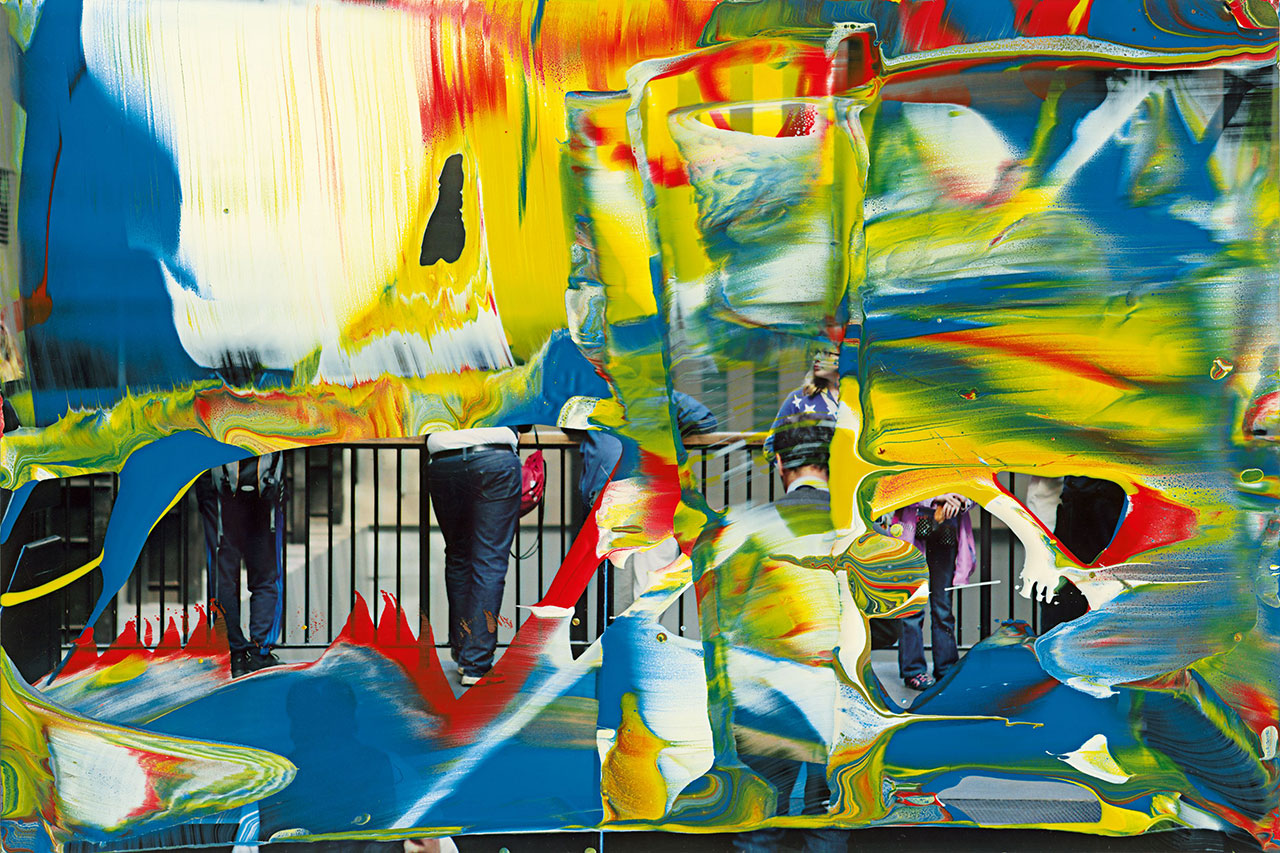 Gerhard Richter practices the dual means of representation and abstraction in painting to explore not only the nature of the medium but also its conceptual and historical implications. While these two modes of working are sometimes characterized in oppositional terms, he has famously embraced both, sometimes simultaneously, finding expressive pictorial possibilities in the tension between them. Throughout, he has tested the ability of art to reckon with personal history, collective memory, and identity, particularly in the context of post–World War II German society.
Gerhard Richter practices the dual means of representation and abstraction in painting to explore not only the nature of the medium but also its conceptual and historical implications. While these two modes of working are sometimes characterized in oppositional terms, he has famously embraced both, sometimes simultaneously, finding expressive pictorial possibilities in the tension between them. Throughout, he has tested the ability of art to reckon with personal history, collective memory, and identity, particularly in the context of post–World War II German society.
By Dimitris Lempesis
Photo: Kulturforum, Neue Nationalgalerie Archive
In 2021 the Gerhard Richter Art Foundation committed a total of 100 artworks to the collection of the Nationalgalerie (National Gallery) as a permanent loan that will be on display at the Museum of the 20th Century upon its completion. The exhibition “Gerhard Richter. 100 Works for Berlin” shows for the first time the long-term loan of the Gerhard Richter Kunststiftung to the Nationalgalerie. The central work in the exhibition, held in the Grafisches Kabinett of the Neue Nationalgalerie, is the series “Birkenau” (2014), consisting of four large-format, abstract paintings. “Birkenau” is the result of Gerhard Richter’s long and in-depth engagement with the Holocaust and the possibilities of representing it. Alongside the “Birkenau” series, other works from various phases of Richter’s career will be exhibited, among them “Squatters’ House” (1989), “4900 Colours” (2007), and “Strip” (2013/2016). There is also another large group of works from Richter’s striking series of overpainted photographs, in which he addresses the tension between photography and painting. In an œuvre spanning six decades, Richter has repeatedly explored the possibilities and limits of painting. The works in this exhibition highlight the tension between abstraction and figuration, between photography and painting, which underlies Richter’s entire œuvre. From the 1960s onwards, he addressed the question of whether or not art was still possible after the Holocaust and the terror regime of National Socialism. Since then, Richter, who moved from East Germany to West Germany in 1961, has repeatedly addressed the topic of German history and his own family history. In this exhibition we are displaying photo editions of the paintings “Aunt Marianne”, “Uncle Rudi”, and “Mr. Heyde”, which Richter painted based on photographs and rendered blurry by smudging the oil paints. For him this was a way to avoid direct depiction. He is also concerned with the refusal of a direct image in his abstract paintings, which he has made since 1976. Richter now paints with intense color and in several layers. The paint is applied with a squeegee, mixed and at the same time partially scraped off again. Layers of color tear open and the lower surfaces shine through, which gives the image a pronounced, deep structure. The result is an interplay between chance and conscious decision in which the process of creating the work of art remains visible. In 1999 Richter made “Black, Red, Gold” (1999) for the entrance hall of the Reichstag building, which houses the German Bundestag, a work made of enamelled glass plates that he intends as a sign of a new beginning. In this exhibition we show the small-format glass work “Black, Red, Gold” (1999), which refers to the Bundestag version. It is presented in combination with two mirror works, the photo editions, and the paintings “Skull” (1983) and “Squatters’ House” (1989). In the work “4900 Colours”, which is composed of 196 individual square panels, each of which is subdivided into 25 color squares, Richter returned to the investigation of color fields that he first undertook from 1966 to 1974. At the time, he was fascinated by industrially produced color sample cards, their smooth perfection, their accuracy of color reproduction and the possibilities of variation. The squares were the exact opposite of emotional emphasis, sublimity or expressiveness – that is, of properties that until then had seemed to be characteristic for painting. In 2007 he returned to the topic with two paintings, in the context of his work on the south transept window for the Cologne Cathedral and “4900 Colours”. For “Strip”, Richter divided the “Abstract Picture” (724-4) from 1990 into ever smaller segments by means of a computer-controlled process, stretched them out by mirroring the axes and rearranged the sections. The result is a combination of seemingly randomly-found striped motifs and their deliberate ordering by the artist. Both “Strip” and “4900 Colours” are a radical evolution of abstract painting in which Richter tested the boundaries of the medium once again and took it to its logical conclusion. The notion of painting’s possibilities and limits also plays a central role in the cycle “Birkenau” from 2014. Richter’s starting point was four photo-graphs from the Auschwitz-Birkenau concentration camp, secretly taken in August 1944 by Jewish prisoners who risked their lives to do so. They are the only known photographs from the extermination camp that were taken by the victims themselves and they were only published after the Second World War. In 1967 Richter had already included one of these photos in his “Atlas”. But it was not until the publication of these images in Georges Didi-Huberman’s book Images Despite Everything (2008), in which the French philosopher used them to analyses how the Holocaust could be represented, that Richter felt the impetus to address the subject again. Richter transferred the four motifs with charcoal and oil paint to individual canvases and then decided to paint over them abstractly. With each additional layer of paint, the painted photographic originals disappeared a little more until they were finally no longer visible to the viewer. Richter thus carried out a process of abstraction, born of the conviction that he could not do justice to the incomprehensible horror of the Holocaust with a direct depiction. His abstract painting offers moments of form and color that create a melancholic, thoughtful mood, especially in the many black and grey surfaces. The abstract does not exclude the figurative; instead, the works create a space between showing and not showing, enabling a broad range of open-ended reflection. Opposite the four “Birkenau” paintings is a large, grey, four-part mirror. Almost since the beginning, Richter’s paintings were accompanied by sculptures made of glass and mirrors, with which he explores the boundary between “natural” and “artistic” images in a variety of ways. The mirrors refer to an external reality and enable personal reflection for everyone in the room. The relationship between abstraction and figuration, photography and painting, appears on a new level in the series “Overpainted Photos”, begun in 1986. These are small-format photographic prints, often 10 x 15 centimeters, which the artist draws from his own private collection: photos of museum visits, trips, walks or his family. Despite their small dimensions, they play an important role in the artist’s development: they embody the interface between abstract painting and the representation of a photographic image as no other group of artworks does.
Photo: Gerhard Richter, MV 133, 2011, lacquer on colour photography, 10.1 x 15.1 cm, on loan from the Gerhard Richter Art Foundation, © Gerhard Richter 2023 (31032023
Info: Curators: Joachim Jäger and Maike Steinkamp, Kulturforum, Neue Nationalgalerie, Potsdamer Straße 50, Berlin, Germany, Duration: 1/4/2024-2026, Days & Hours: Tue-Wed & Fri-Sun 10:00-18:00, Thu 10:00-20:00, www.smb.museum/museen-einrichtungen/neue-nationalgalerie/home/
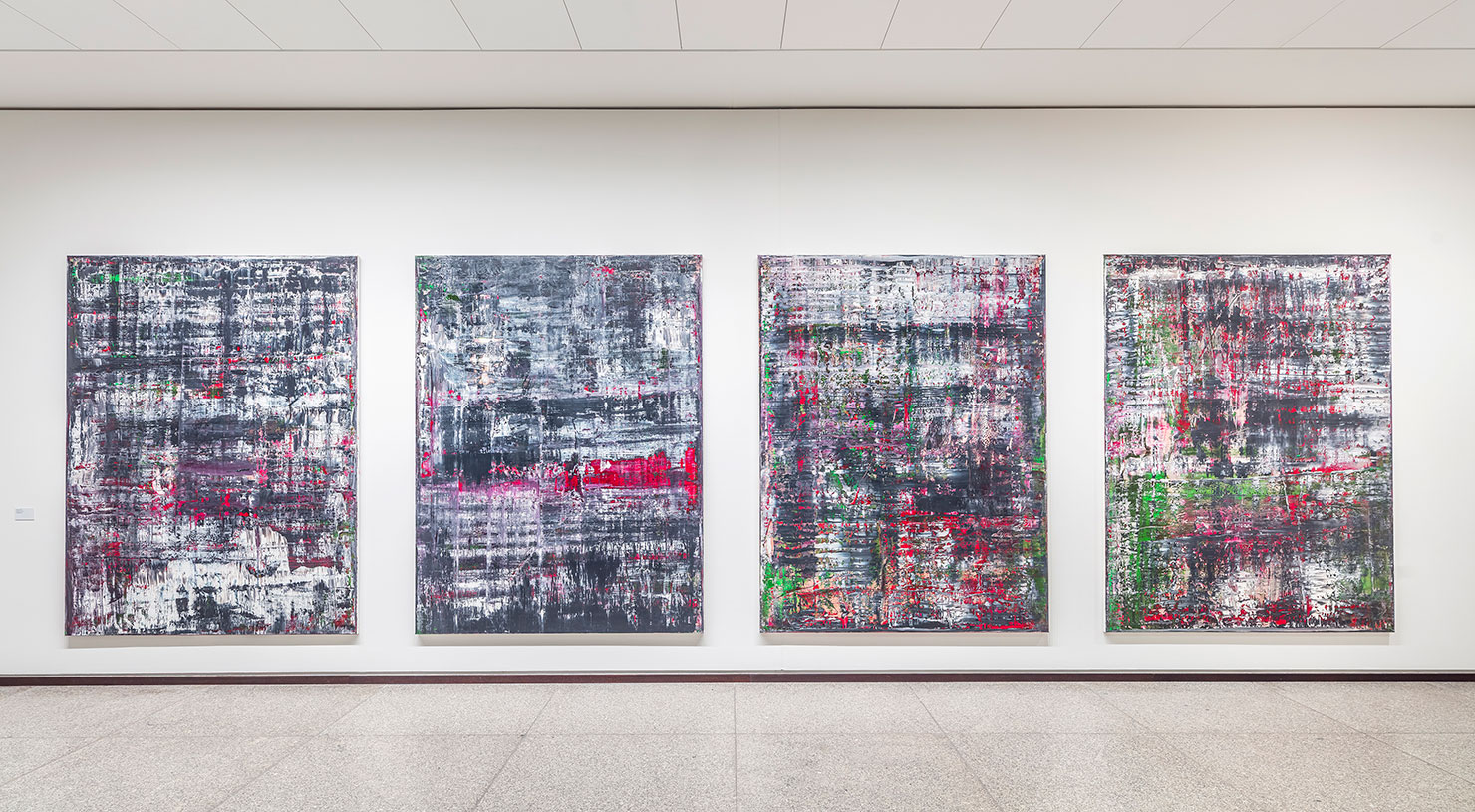
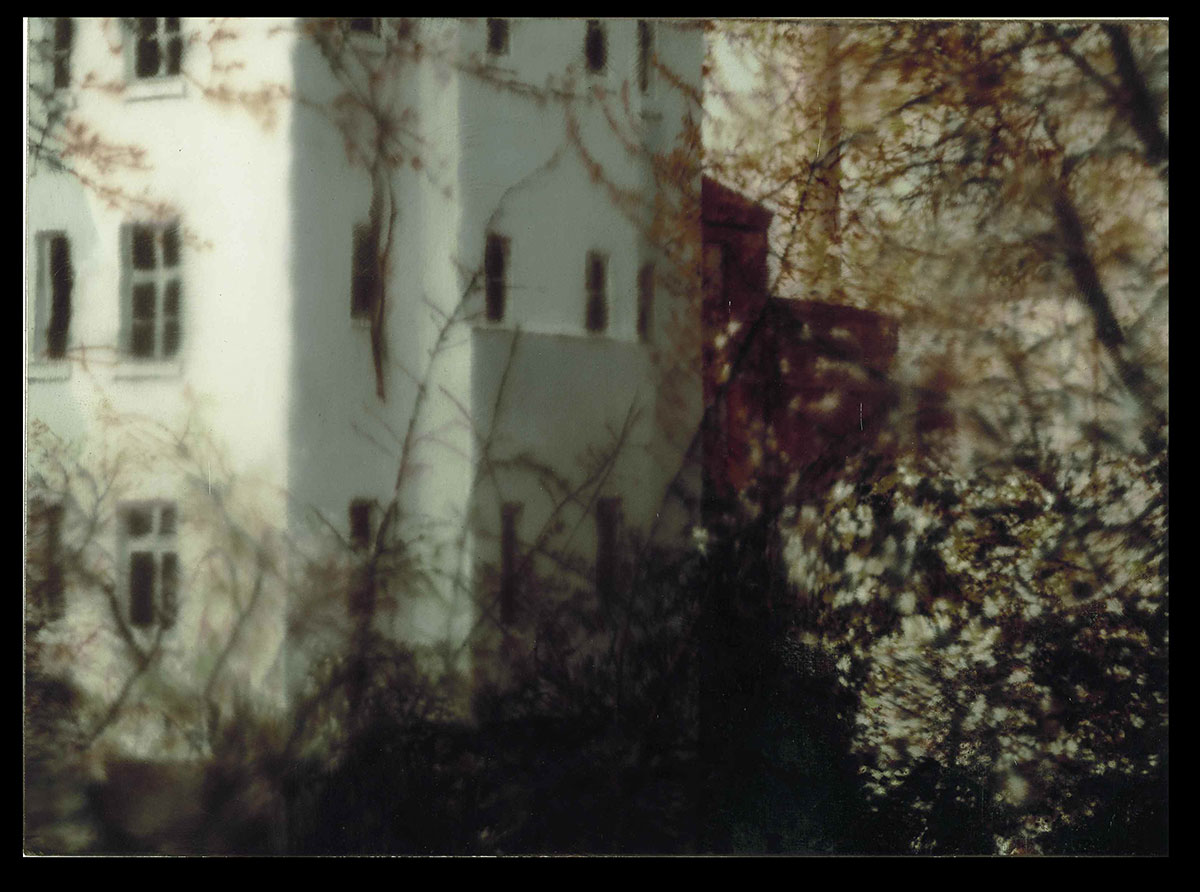
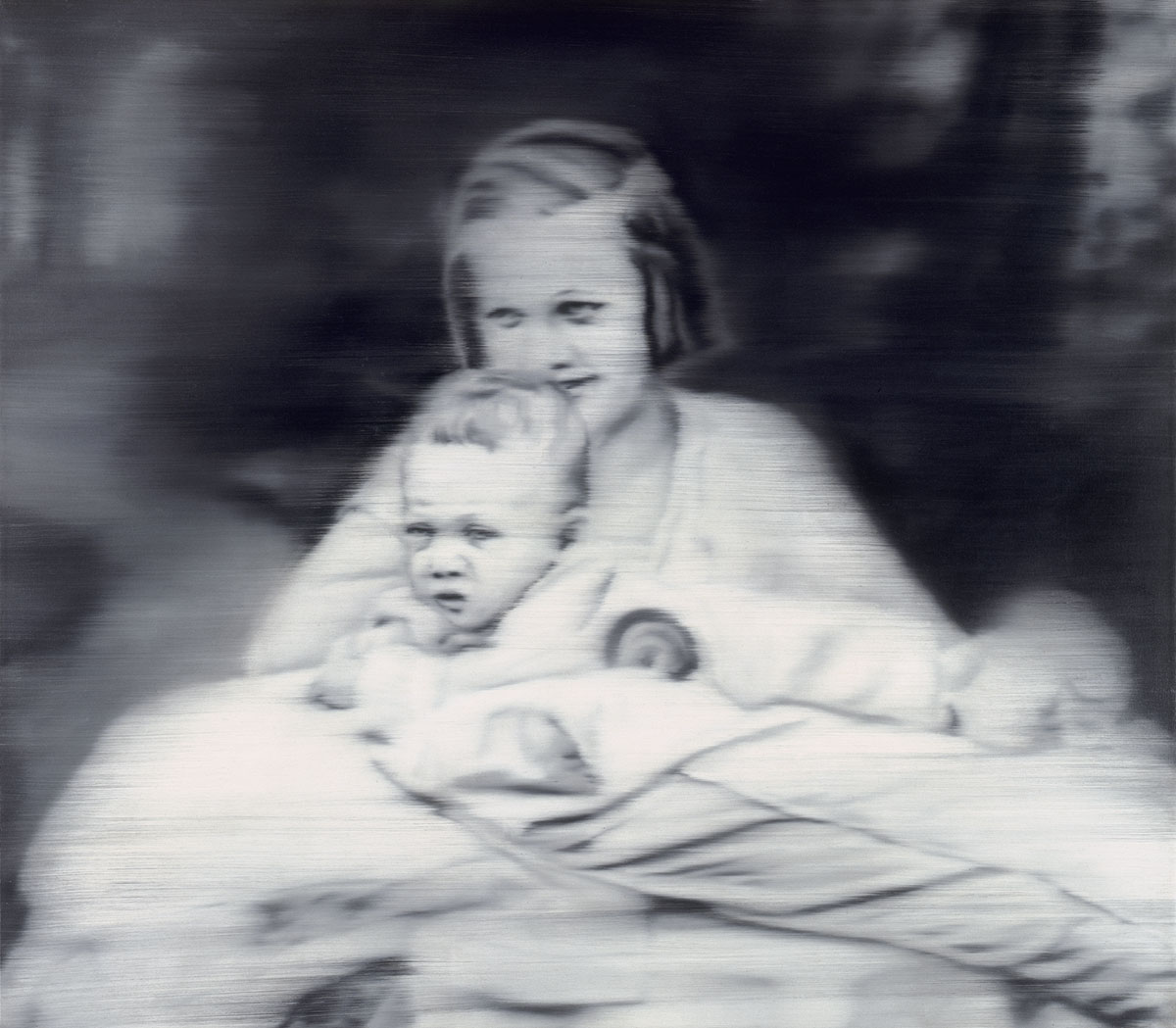

Right: Gerhard Richter, Birkenau (937/1), 2014, oil on canvas /260 x 200 cm, on loan from the Gerhard Richter Art Foundation, © Gerhard Richter 2023 (31032023)
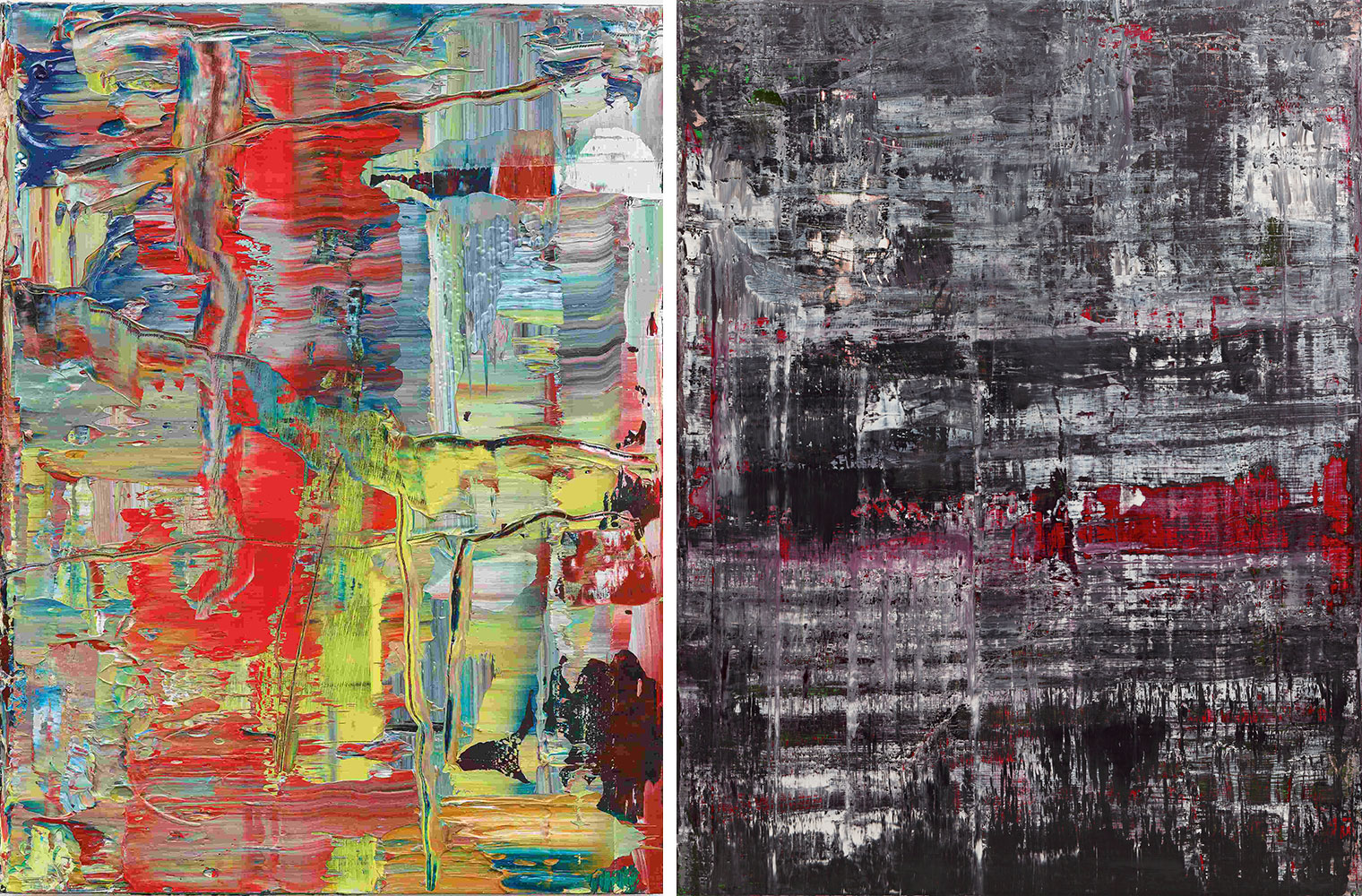
Right: Gerhard Richter, Birkenau (937/2), 2014, oil on canvas /260 x 200 cm, on loan from the Gerhard Richter Art Foundation, © Gerhard Richter 2023 (31032023)
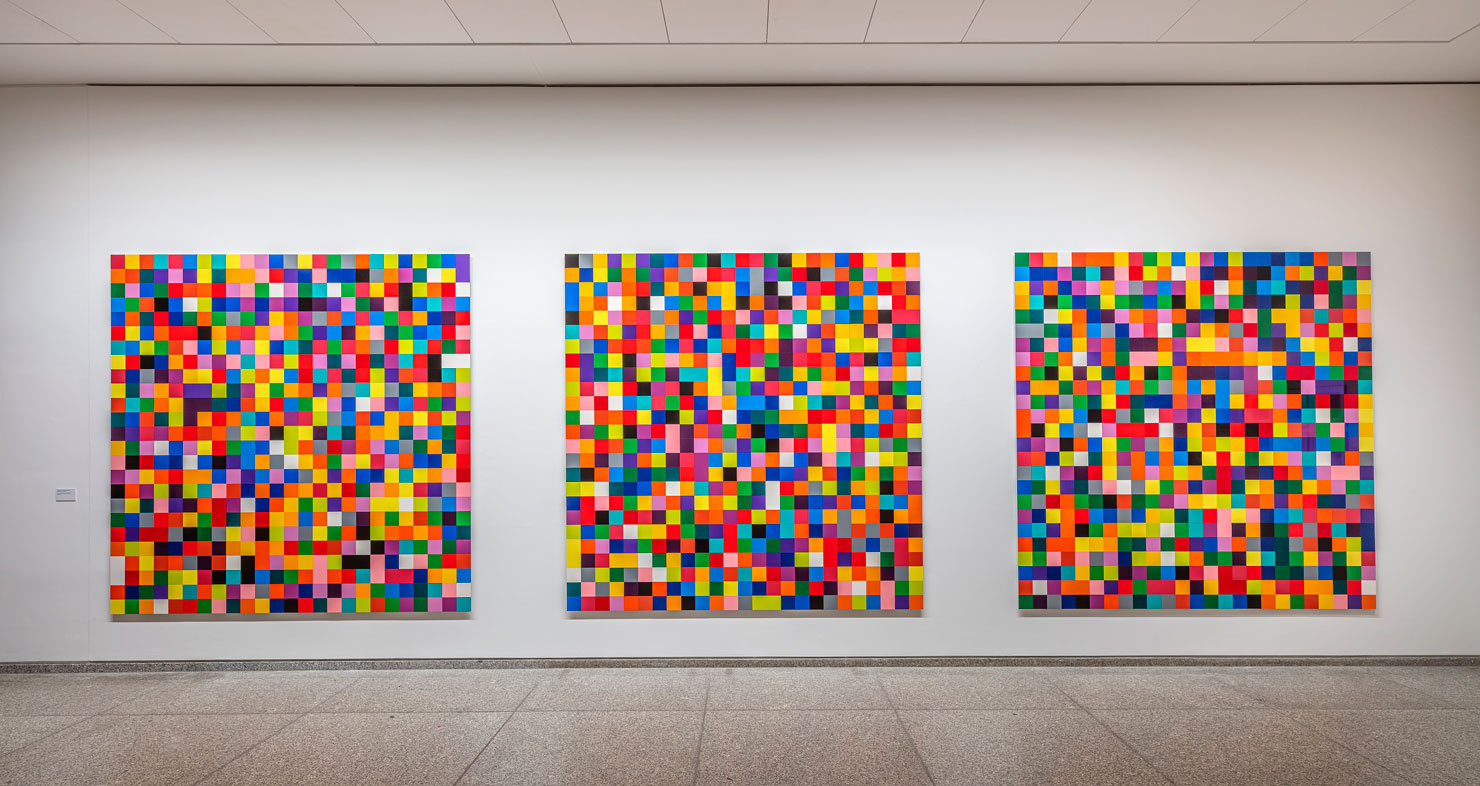

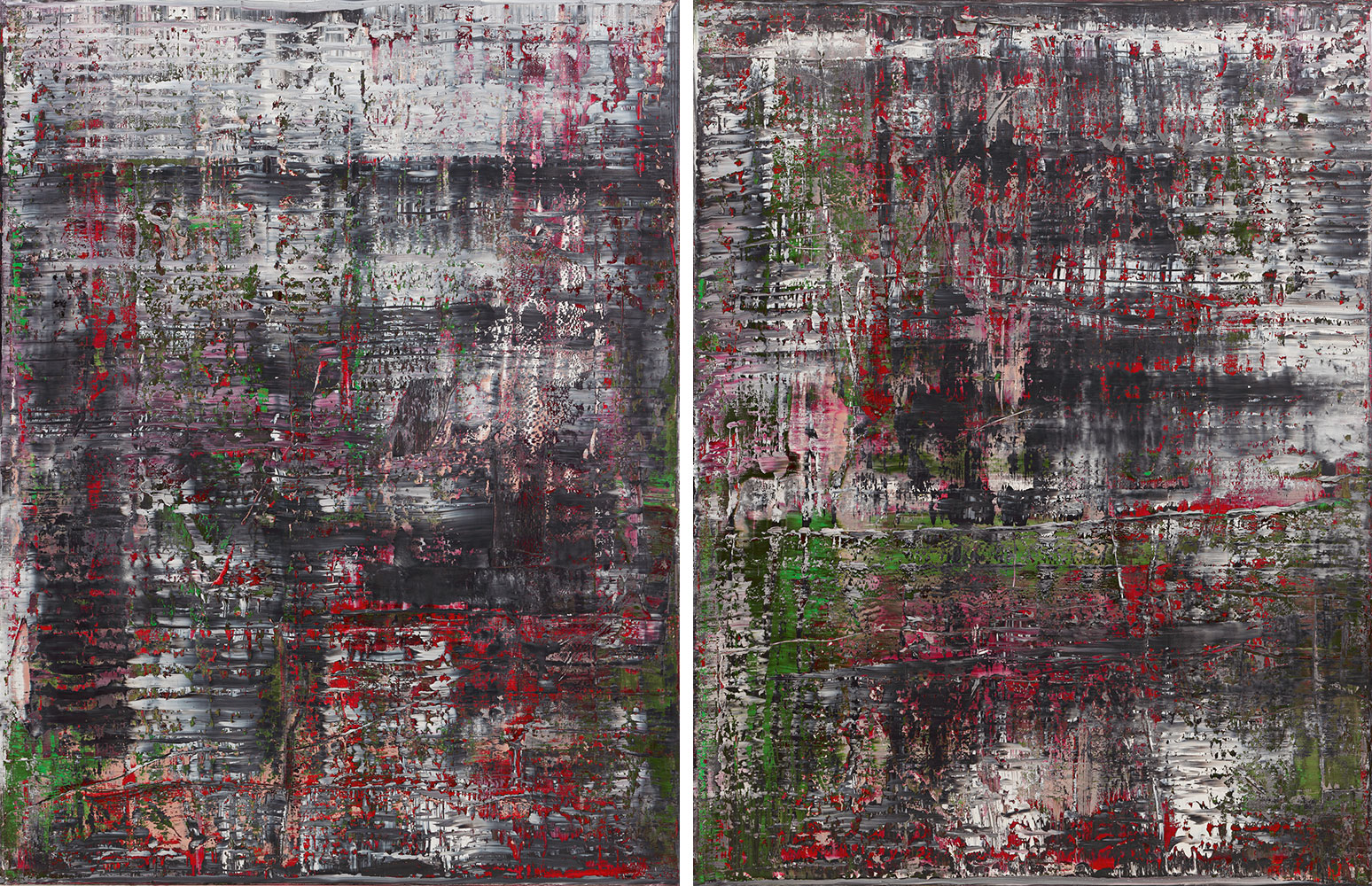
Right: Gerhard Richter, Birkenau (937/4), 2014, oil on canvas /260 x 200 cm, on loan from the Gerhard Richter Art Foundation, © Gerhard Richter 2023 (31032023)
